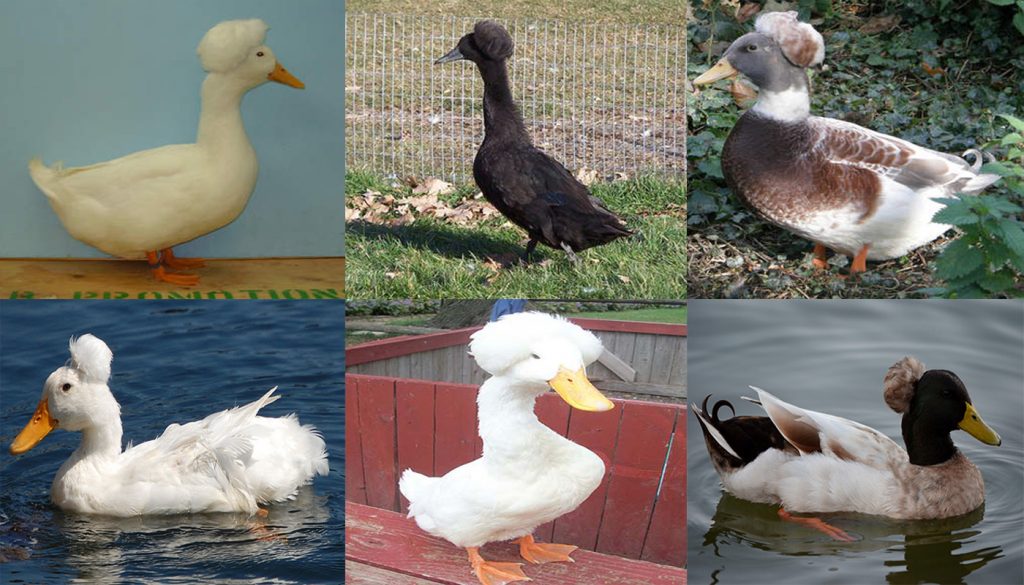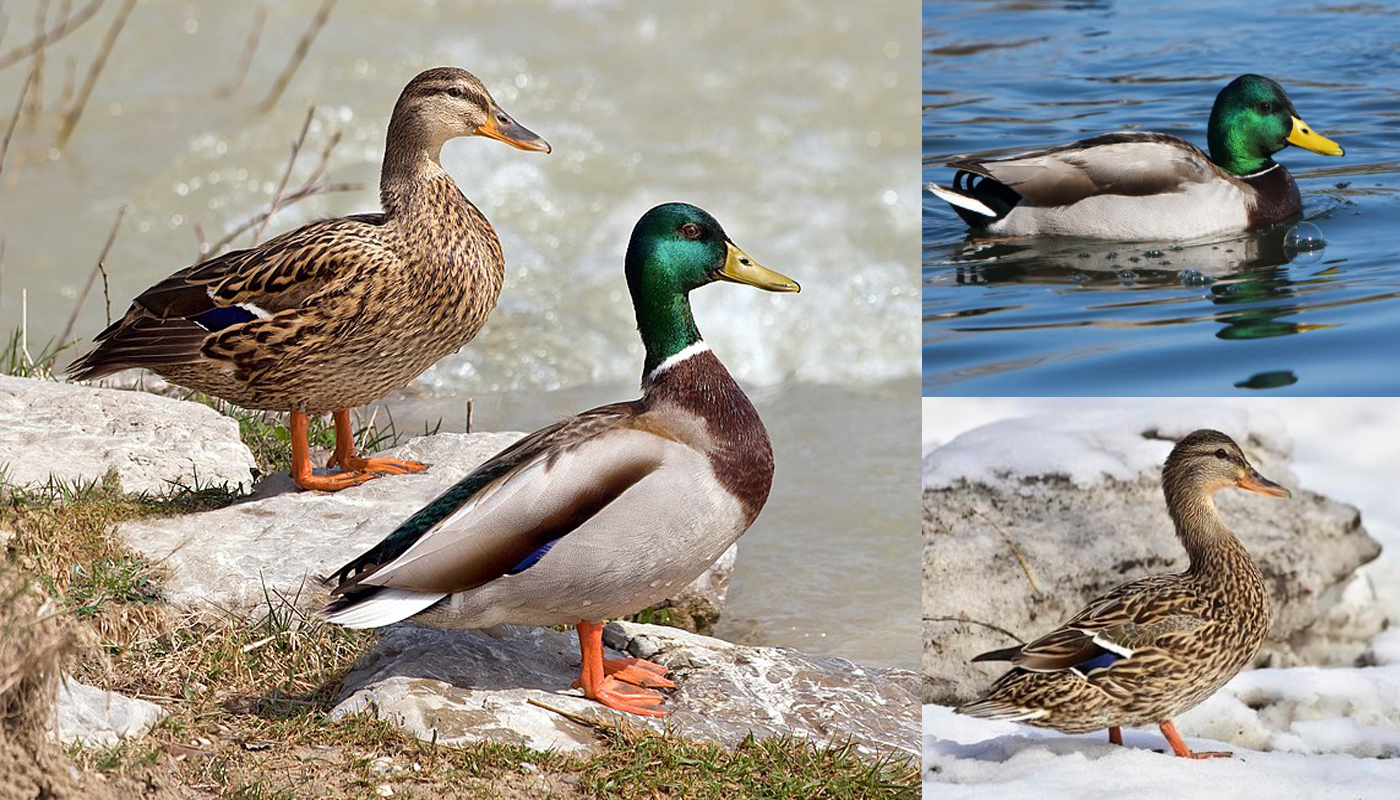
In the older Disney cartoons, the ducks that were depicted as sailor ducks were white with a cute bobble on their head for their hats.
The Crested duck reminds me so much of the Disney depiction of those cute sailor ducks. There are a few colors, but the APA only recognizes the black and white variety of the breed.
The white variety is pure white with its white crested on its head that looks like a pom-pom. The white variety has the typical duck orange bill, legs and feet.
The black variety, however, is pure black with a black pom-pom on the top of their head. Their legs, feet and bill are also dark.
Although they are a dual-purpose breed used for both meat and eggs. These unique ducks make great pets and terrific show birds. They are also quite a good starter duck for the first-time duck owner.
GENERAL INFORMATION |
|
|---|---|
| Country of Origin: | South America |
| American Poultry Association: | yes Recognized by the American Poultry Association |
| Duck Category: | Medium |
| Duck Class: | South American |
| Colors: | Black, Date of acceptance: 1977 White, Date of acceptance: 1874 |
| Other known colors | There are various different colors that are recognized in different countries around the world. |
| Good starter duck? | Yes |
| You may Also Like: | TOP 10 GOOD STARTER DUCK BREEDS |
| Bantam Variety Available? | Yes-Crested Miniature |
| You may Also Like: | 10 BEST BANTAM DUCK BREEDS |
APPEARANCE / IDENTIFICATION
| DUCK BITS | DESCRIPTION | COLOR | |||||||
|---|---|---|---|---|---|---|---|---|---|
| EYES⇒ | Same for M & F | Blue | |||||||
| BILL⇒ | Same for M & F | White variety have a Yellow Bill Black variety have a black bill |
|||||||
| * Black bean tipped | |||||||||
| CRESTED? | Yes | Depends on the color variety | |||||||
| Same color for M & F, White Variety have a White crest, Black Variety have a Black crest | |||||||||
| LEGS⇒ | Same for M & F Short Length |
White variety have orange legs Black variety have a dusty/mottled black |
|||||||
| FEET⇒ | Same for M & F Medium Sized |
White variety have orange feet Black variety have a dusty/mottled black color |
|||||||
| WINGS⇒ | Same for M & F | The white variety is pure white The black variety is pure black |
|||||||
| FEATHERS⇒ | Same for M & F | The white variety is pure white The black variety is completely black |
|||||||
| SKIN COLOR⇒ | Same for M & F | White | |||||||
| Can be yellow depending on what they have eaten | |||||||||
| AVERAGE WEIGHT⇒ |
|
||||||||
| *Bean: This is also called the nail. It is a small round bump found at the end of the duck’s bill. It is used for defence and to catch insects. It is almost like a fingernail and is damaged can grow back. It can also get overgrown much like fingernails if they do not have something to grind it down on. | |||||||||
| ** Note: This is an average weight for the male duck and not a guaranteed weight | |||||||||
USE/PURPOSE |
||||||||||||||||||||||||||||||||||||
|---|---|---|---|---|---|---|---|---|---|---|---|---|---|---|---|---|---|---|---|---|---|---|---|---|---|---|---|---|---|---|---|---|---|---|---|---|
Females/Hens⇒ |
They are mainly kept as a show or ornamental duck. But can be used for eggs, meat and pets
|
|||||||||||||||||||||||||||||||||||
Males/Drakes⇒ |
Meat, show, breed and pets
|
TEMPERAMENT |
|
|---|---|
| “They are easily spooked but if reared correctly can be quite friendly” | |
| Good with Kids? | They are okay around supervised children |
| You may Also Like: | 10 BEST DUCK BREEDS TO KEEP AS FAMILY PET |
| Flyers? | They can fly |
| Noisy Birds? | They are quite a noisy duck breed |
| Interact with other ducks? | They do socialize with other ducks |
| Best duck breeds to mix them with: | Any domesticated breed of duck . |
| Other animals? | They tend to avoid other domestic animals. |
IDEAL ENVIRONMENT |
|
|---|---|
| Ideal Garden Size? | Medium to large |
| Can be Confined? | No |
| Free-Range | Yes |
| Penned Free-Ranging? | Yes |
| Foragers | Yes |
| Endures heat well | Yes |
| Endures cold well | Yes |
| Special Requirements? | No |
| Ideal Duck House: | Any good-sized hutch that will comfortably house the number of ducks. Make sure it is well ventilated and insulated. It must also lock to keep the duck safe from predators and vermin |
| Ideal Duck Pond: | Any splash pool or shallow duck pone |
| Flock/Paddling Size: | Two or more ducks as they love to socialize |
| You may Also Like: | 22 Best DOMESTIC DUCK BREEDS |
GOOD TO KNOW |
|
|---|---|
| Special Care/Attention Requirements? | They have no special needs |
| Known Predators: | Check with animal control in your area for known predators |
| Conservations Status: | Not Listed For more information on poultry, conservation status, check the American Livestock Conservancy Website |
| Breeders Clubs: | It is best to check with the American Poultry Association for various clubs and or organizations. |
| Where to buy them: | Purely Poultry, Metzer Farms, My Pet Chicken or check with local poultry suppliers and or farmers in your area or check with your local poultry dealers and or farmers, the APA or check with the American Livestock Conservancy |
| Other: | If you do not want to risk having your ducks shipped check with your local poultry farms for advice on your nearest supplier. |
HISTORY
The crest on the Crested ducks head is caused by a genetic mutation which causes a genetic deformation of the skull.
This breed of duck has been depicted in Dutch portraits that date back to the 17th century. Establishing that the breed has been around since before the 1600’s.
Their exact origin is unknown although it has been surmised that they were probably brought to Europe by Dutch ships from the East Indies. It is in Europe where they were developed into the breed that is in existence today.
The Crested duck was imported to America in the mid-1800’s. The white variety was the first variety of the Crested duck to be admitted to the American Standard of Perfection by the American Poultry Association in 1910.
The Black variety of the Crested duck was admitted into the Standard of Perfection by the American Poultry Association in 1977.
There are quite a few other colors of the crested duck such as the Grey, Blue and Buff which, along with the Black and the White varieties are accepted in the United Kingdom.
There is a Bantam version of the crested duck called the Crested Miniature which was developed in the late 20th century by Roy Sutcliffe and John Hall from the United Kingdom. Whilst the crested miniature was accepted in the UK in 1997 it has not, as yet, been accepted into the Standard of Perfection by the American Poultry Association
Health
No known health issues
- Ducks need water to ensure they do not get “wet feather” disease. This is where the preening gland dries out. Water also stops them from getting pests such as mites, fleas, ticks, lice, etc.
- Well, fed ducks should hardly have any health issues.
- Any birds kept in a flock need to be dewormed. Although ducks are not as prone as other poultry they should still have a de-worming regime. Speak to a local vet or poultry experts for advice. Our article on Healthy Ducks has some great tips and advice on de-worming ducks.
 Muscovy Duck Breed – Everything You Need to Know
Muscovy Duck Breed – Everything You Need to Know Call Duck Breed – Everything You Need to Know
Call Duck Breed – Everything You Need to Know Duclair Duck Breed – Everything You Need to Know
Duclair Duck Breed – Everything You Need to Know Bantam and Miniature Duck Breeds
Bantam and Miniature Duck Breeds Indian Runner Duck Breed – Everything You Need to Know
Indian Runner Duck Breed – Everything You Need to Know Gadwall – Wild Dabbling Duck Breed
Gadwall – Wild Dabbling Duck Breed Cayuga Duck Breed – Everything You Need to Know
Cayuga Duck Breed – Everything You Need to Know Australian Spotted Duck Breed – Everything You Need to Know
Australian Spotted Duck Breed – Everything You Need to Know Blue-Winged Teal – Wild Dabbling Duck Breed
Blue-Winged Teal – Wild Dabbling Duck Breed American Wigeon – Wild Dabbling Duck Breed
American Wigeon – Wild Dabbling Duck Breed Mallard Duck Breed – Everything You Need to Know
Mallard Duck Breed – Everything You Need to Know Wood Duck – Wild Dabbling Duck Breed
Wood Duck – Wild Dabbling Duck Breed